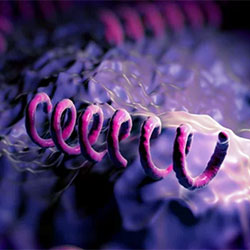Not only is on-demand administration of doxycycline after condomless sex (doxyPEP) an effective prophylaxis against bacterial sexually transmitted infections (STIs), but patients are embracing it, according to new data presented at CROI 2024, in Denver.
The results of several trials of doxyPEP, including the doxyPEP study, were so compelling the CDC recommended doxyPEP be offered to people who would benefit. DoxyPEP was a randomized controlled trial with men who have sex with men and transgender women who had an STI in the past year. The participants were randomly selected to receive doxyPEP or standard of care without doxyPEP.
“The randomized portion of the study was stopped in May 2022 due to high efficacy with a two-thirds reduction overall in bacterial sexually transmitted infections,” explained Annie Luetkemeyer, MD, a professor of medicine at the University of California, San Francisco School of Medicine, who presented the data.
All participants were offered the opportunity to join an open-label extension study in which everyone received doxyPEP. The open-label study included 289 participants (82 in the original standard-of-care arm and 207 in the original doxyPEP arm) and were followed for a median of two quarters. During the open-label extension, those initially selected for doxyPEP had a sustained reduction in any of the bacterial STIs of 13% per quarter. Those who switched to doxyPEP saw the incidence of STIs per quarter decrease from 31% in the original trial to 17%.
There were some notable behavioral differences between the two studies. During the original study, people took a median of about five doses per month, but it increased to about six doses per month in the open-label extension. “The dose range was quite wide, because people had variable sexual activity,” Dr. Luetkemeyer said. “Some people took substantially more than that, and some people took less. But we did see a slight uptick in the median amount of doxy that was reported.”
There also were changes in sexual behavior. “Participants reported an increasing number of sex partners and condomless, insertive and receptive sex acts, with a greater increase in those who originally were on standard of care and now are rolled over into starting doxyPEP,” she said. Despite the short-term increases, they saw a “sustained and comparable decrease in STI incidence.”
Other Supportive Data
Once doxyPEP became available, the community was receptive to the new regimen, according to Hyman Scott, MD, MPH, the clinical research medical director of Bridge HIV, a San Francisco–based organization that works with Bay Area and international communities to discover effective HIV prevention strategies.
The San Francisco AIDS Foundation, a separate group that offers sexual health services, wanted to “move very rapidly to implement this new intervention in our communities” after the CDC recommended doxyPEP in 2022, Dr. Scott explained. The foundation enrolled at-risk people from the clinic and compared the STI incidence before and after doxyPEP became an option (June 2022 to September 2023).
“There was a strong demand for it,” Dr. Scott explained. “About 39% of individuals ultimately decided that they wanted doxyPEP as an STI prevention tool. Overall, we saw a 58% reduction in any bacterial STI that was higher for chlamydia at 67% and even higher for syphilis at 78%.”
However, the effect on gonorrhea incidence was less pronounced: The group documented only an 11% difference for the STI after offering doxyPEP, noted Dr. Scott, who is also an assistant clinical professor at the UCSF School of Medicine.
Another study, also conducted in San Francisco, saw similar results, noted Madeline Sankaran, MPH, of the San Francisco Department of Public Health. “Local providers quickly implemented them, and eligible people rapidly adopted its use.”
The health department did a population level analysis to compare reported cases of chlamydia, gonorrhea and early syphilis in the 16 months before and 13 months after implementing the doxyPEP strategy. They found significant decreases in cases of chlamydia and early syphilis. “By the end of the period of our analysis, we were seeing about 50% fewer cases of chlamydia and early syphilis per month compared with model predictions,” Ms. Sankaran said. However, they did not see a decline in gonorrhea.
They compared their rates with reports of STIs in cisgender women and did not observe declines in the women’s STI rates. Because of the lack of efficacy, doxyPEP is not recommended for cisgender women—even if they are at risk for STIs.
Comparing those results, Ms. Sankatan said, strengthens the conclusions that the reductions in STIs seen were related to the intervention.
Questions remain to be answered as more people use doxyPEP, added Dr. Luetkemeyer, most notably, how people take it, what changes to sexual behaviors result, whether resistance develops, and how to distribute it equitably.
An HIV Pharmacist’s Take
These data “highlight the impact that doxyPEP can have on the incidence of STIs,” commented Amanda Binkley, PharmD, BCIDP, AAHIVP, a clinical pharmacy specialist, Department of Pharmacy at Penn Presbyterian Medical Center, in Philadelphia. “Doxycycline is an effective antimicrobial with minimal side effects, which has demonstrated significant reductions in the incidence of bacterial STIs and should be utilized to improve the care of individuals in our local and regional communities.”
Dr. Binkley added that “pharmacists can play a significant role in ensuring individuals are aware of the use of doxycycline for PEP and assisting with access to the medication.”
The sources reported no relevant financial disclosures.
This article is from the April 2024 print issue.








